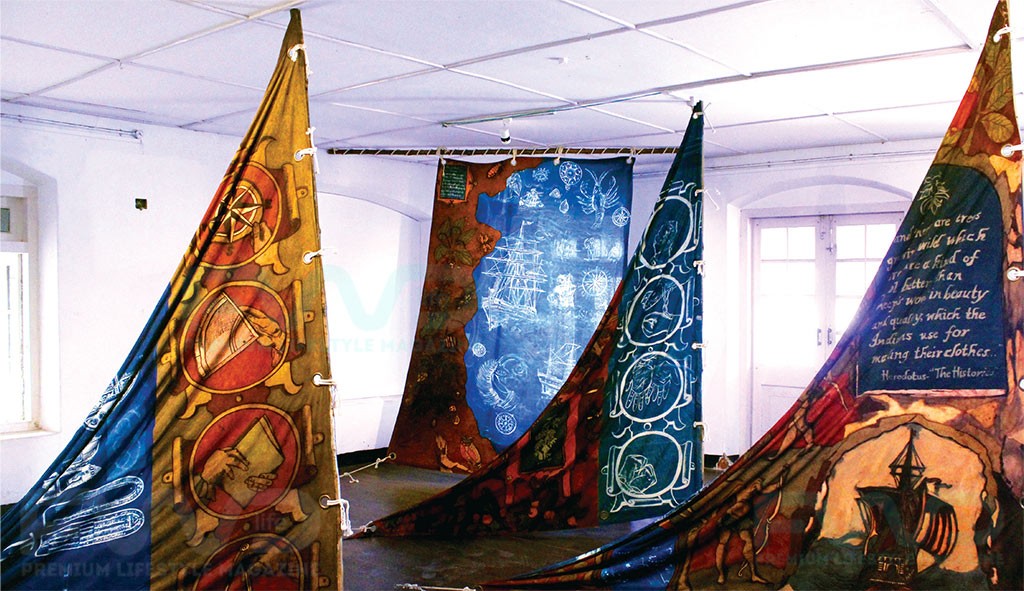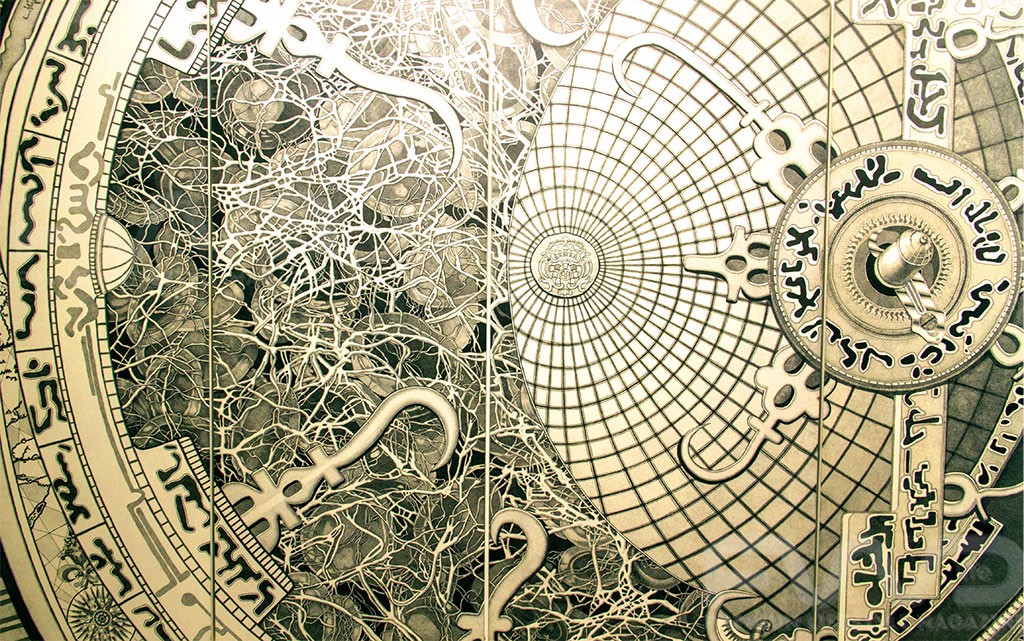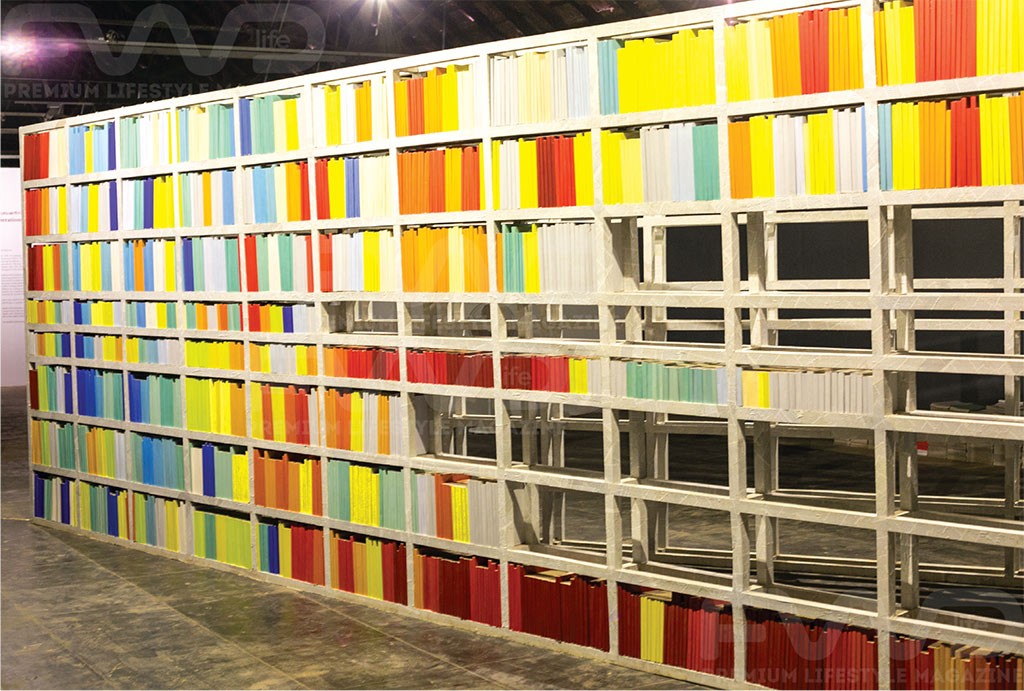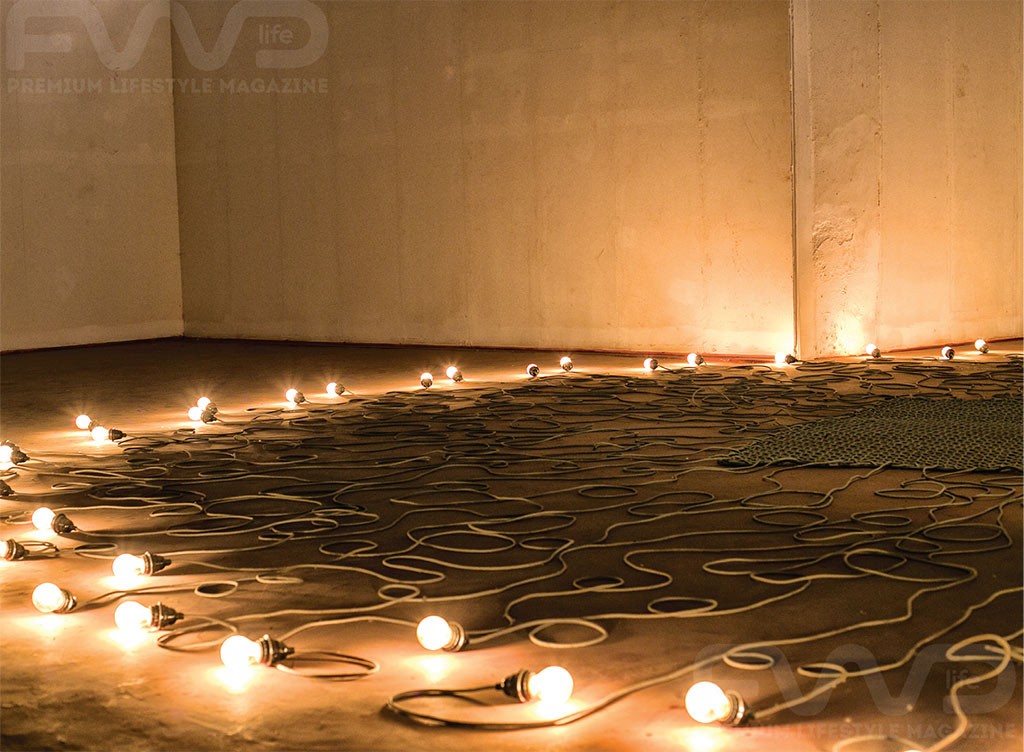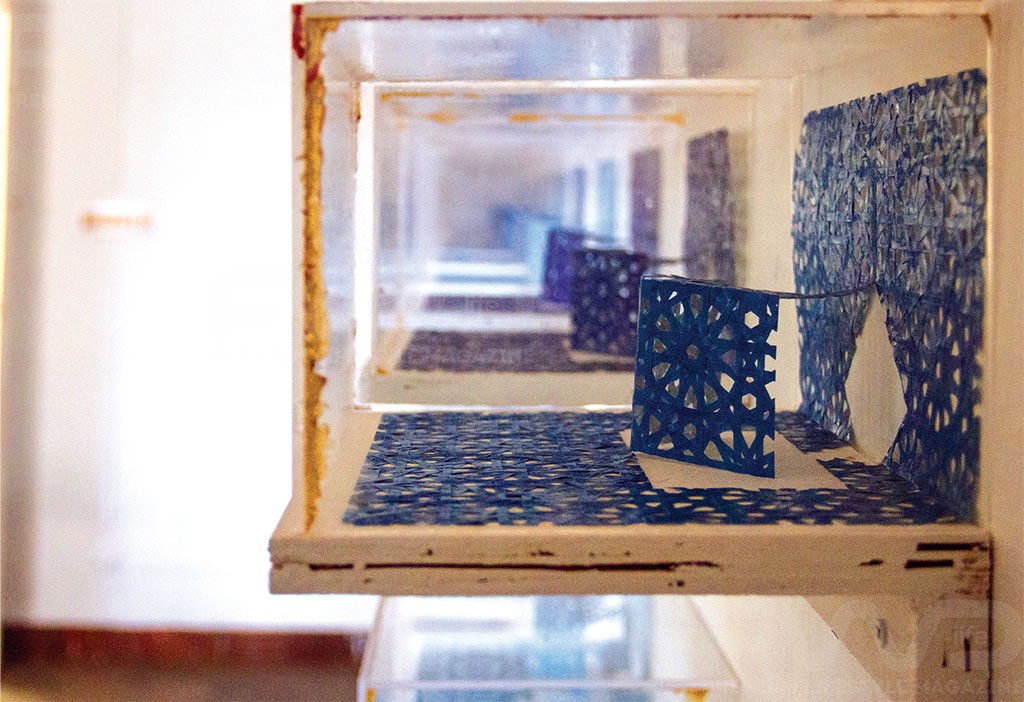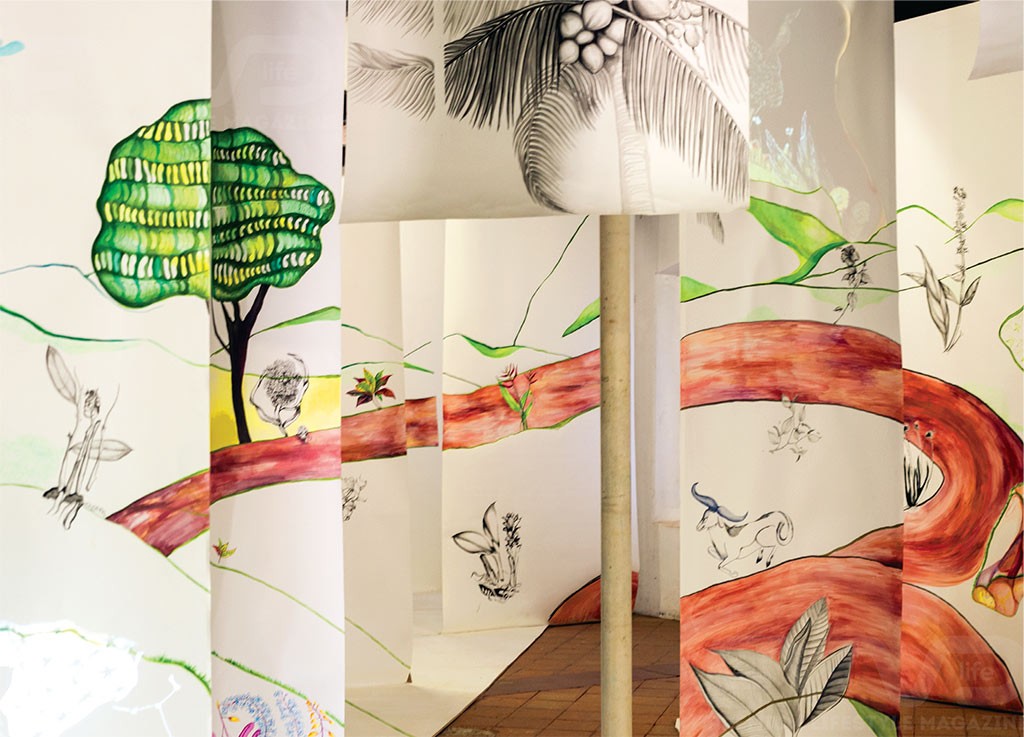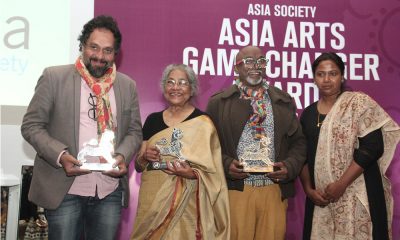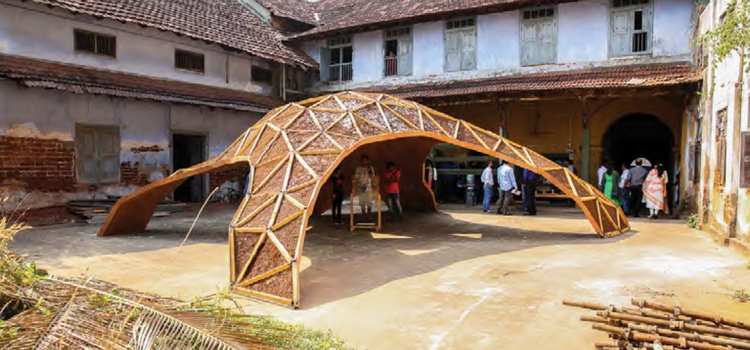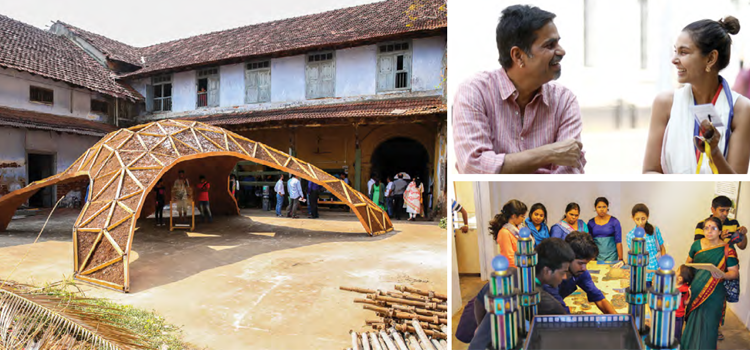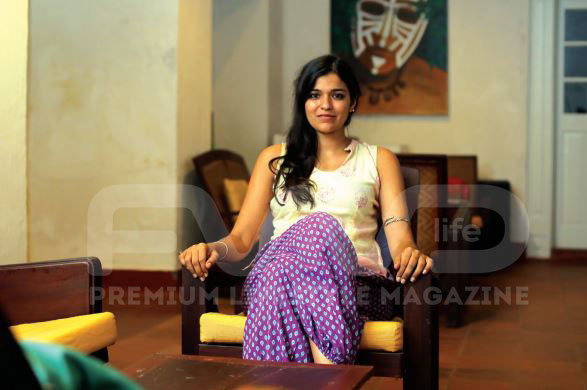Cover Story
Six powerful Installations by women artists from Kochi-Muziris Biennale that you may have missed!!!
FWD dedicates this to all those who couldn’t make it to Kochi-Muziris Biennale
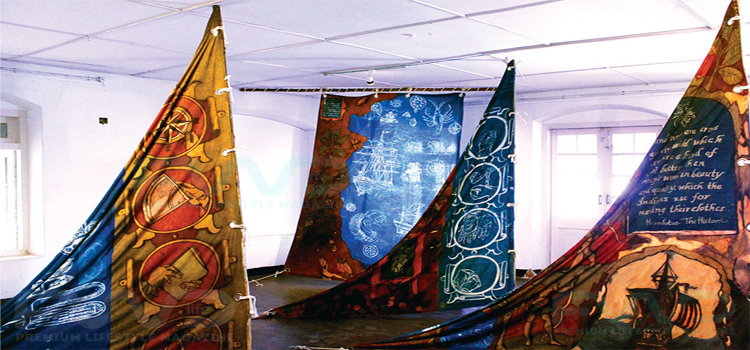
Photos: Suneesh Suresh, Binu Avarachan
LAVANYA MANI
Vadodara
Born 1977 in Hyderabad
The artist weaves tales, literally. Lavanya Mani explores the world of textiles through traditions and techniques of textile painting, printing and embroidery in the country. Through her art, Mani makes a tapestry of history, experiences and craftsmanship. She is interested in the world of textiles and text like ‘spin a yarn’, and ‘to fabricate.’ Her artworks are multi-layered and have been exhibited around the country.
Travellers Tales – Blueprints
Cotton fabric with natural dyes and cyanotype.
Aspinwall
They hang like the sails of a ship, catching wind in careless abandon. The bold symbols and the earthy colors of the natural dyes capture your eye. Through the traditional technique of ‘Kalamkari,’ she depicts the role of textiles in the colonialism of India. According to her, Kalamkari was so popular in Europe in the 17th century that French and British governments banned it. The blue color of the cyanotype, a photographic medium when applied to cloth and exposed to light represents the ocean and Indigo- a dye that changed history. The painting also includes texts from travelers in those days.
PARVATHI NAYAR
Chennai
Born 1964 in Delhi
Parvathi Nayar uses the power of black and white to make abstract portraits of the world. She plays with scale and perspective to create images of the world from microscopes and satellite cameras. It all starts with a point, according to her, that gives rise to the world of art.
Drawings on wooden panels
Aspinwall hanging
The astrolabe- a device used years ago by astronomers and navigators to mark the time and position of celestial bodies. The instrument is depicted as the base of the drawing with maps and geographical reference to the intricate layouts of cells merged. Maps of the world and our lives intertwined with references to the Malabar Coast and its rich trade history. A large peppercorn looms over a turbulent Arabian Sea. Intricate pathways of subatomic particles. Parvathi Nayar asks you to look at the world from different perspectives with various references.
NAVJOT ALTAF
Mumbai
Born 1949 in Meerut
Her work with communities and indigenous artists has garnered a lot of attention. Her pieces are interactive and seek to include art within the fabric of community life. An early encounter with Marxism led to her interest in feminism and has been a part of shaping the artist’s perceptions and work.
Mary Wants to Read a Book
Wood, paper, audio and video
Aspinwall
A tall library shelf with a rainbow of books. More than 2,000 books with recycled paper, each with a text from the artist’s research signify the literacy of the state and its recent developments. The books and the shelf also are the 3D documentation of the continental temperature rise over the last 2000 years. The work creates a conversation between development and environmental changes. It implores you to look at progress and our experiences that could result in ecological disasters. The multiple significances of the various elements are interesting and during the last two weeks of the Biennale, one can take away the books.
MONA HATOUM
Germany and UK
Born 1952 in Lebanon
Objects acquire different identities in the hands of Mona Hatoum. She turns mundane objects into pieces that question identities, references, and multiple meanings. The experiences she creates are uncanny and rather poetic.
Undercurrent
Light bulbs and cables
Aspinwall
A square mat woven of cables unravel outwards to bloom into light bulbs. The meandering lines of the cables never touch away from the rigid source they arise from. The light of the bulbs fluctuate a warm yellow, either a sign of warning or the rhythm of breathing. They never stop, just like the world that ebbs and flows with danger and happiness. The pulse of the light will hold you entranced as people swarm about looking at the various exhibits.
HAMRA ABBAS
Pakistan and the USA
Born 1976 in Kuwait
Hamra Abbas works extensively with photography, performance and multimedia art. She is known for her pieces that re-address iconic images and other symbols of historical, religious, and cultural importance.
Kaaba Pop-ups
Printed paper
CSI Bungalow
Rows of origami are what you notice as you walk into the dimly lit room at CSI Bungalow. The 24 handmade paper sculptures in various shades of blue are folded into intricate Islamic stalactite patterns. Enclosed in acrylic boxes, the paper folds into a three dimension cube in the center. This is modeled on the ‘Kaaba’, the cuboid structure in the center of the mosque in Mecca. The ‘Kaaba’ is an integral part of the faith and is a recurring image in Muslim homes. The fragile nature of paper contrasts the monument and its significance. It also serves as the representation of nature, faith, sky and the seas. A modern take on the traditional symbol.
SUMAKSHI SINGH
New Delhi
Born 1980 in New Delhi
The world is an illusion. Sumakshi Singh is known for her interactive installations that allow the viewer to inhabit and alter the moment with their involvement. Her constant conversations with the external and internal serve as a locus and reference to space, time, culture, history and ourselves.
In, Between the Pages
Multimedia installation
Pepper House
The pages of a book have moving images of everyday things projected onto it. Behind lays a maze of hanging paper scrolls. You are surrounded by familiar images of birds, animals, coconut trees and the like. The images cross planes and boundaries while you walk among them. The cosmology of Surya Siddantha; a Sanskrit text on astronomy, Hortus Malabaricus; a 17th-century study of Kerala’s flora and the landing of Vasco da Gama form the narratives. At another end, a projection ties the maze together where the viewers find themselves as part of the image and the telling of the story.
Cover Story
Starlit Wedding – Diya Krishna

Actor Krishna Kumar’s daughter, Diya Krishna, a popular social media influencer, recently married Ashwin Ganesan, a software engineer, after a long-term relationship. The couple celebrated their special day with a beautiful ceremony at a luxurious hotel in Thiruvananthapuram. Diya’s family, including her siblings Ahaana, Ishani, and Hansika, along with her parents Sindhu Krishna and Krishna Kumar, looked radiant in coordinated light pink ensembles. The wedding was an intimate gathering, attended by close family and friends. Here are all the details of their magical day.
Haldi
For the Haldi ceremony, Diya and Ashwin were spotted in coordinated white outfits by Santini. The look was beautifully elevated with a pop of color from Diya’s pink dupatta and stunning floral jewellery by Florita Florals, adding a fresh, vibrant touch to the celebration.

Diya’s Outfit : Santinni
Aswin’s Outfit : Santinni
MakeUp : Amala Brahmanandan
Jewellery : Florita Floral
Event Planner : Grand Oyster
Photography : Abhijith SK
Location : Taj Green Cove Resort & Spa
Mehendi
Diya looked effortlessly chic in a vibrant multi-colored skirt set by Mahek Designs for the Mehendi celebration. Ashwin complemented her perfectly with a multi-hued jacket by Santini, completing their joyful and lively Mehendi look.

Diya’s Outfit : MAHEK DESIGNS
Aswin’s Outfit : Santinni
Mehandi : MISHMA KAMAL
Event Planner : Grand Oyster
Photography : Abhijith SK
Sangeeth
Diya and Ashwin absolutely rocked their Sangeet in stunning black outfits by Santini, exuding elegance and style as they celebrated the night in perfect sync!

Diya’s Outfit : Santinni
Aswin’s Outfit : Santinni
Jewellery : Atelier by Regal Jewellers
MakeUp : Laxmi Venugopal
Event Planner : Grand Oyster, Decor Lab Events
DJ : TONIQ SQUAD
Photography : Abhijith SK
Wedding
For the wedding, Diya truly dazzled in a polished pastel-themed saree designed by the talented M Loft by Joel. Styled in a manner reminiscent of Bollywood star Alia Bhatt’s iconic fashion sense, the saree was a vision of beauty, adorned with elegant detailing, intricate embroidery, and flowing glamour, imparting a regal charm to her bridal look.

Diya’s Outfit : M LOFT
Aswin’s Outfit : M LOFT
Jewellery : Atelier by Regal Jewellers, Regal Jewellers
MakeUp : Laxmi Venugopal
Draping : Aamee Hafsa Nazar
Event Planner : Grand Oyster, Decor Lab Events
Garlands : Black Gold Flowers
Photography : Abhijith SK
Wedding Second Look
For her second wedding look, Diya embraced a simple yet elegant white Kerala traditional set mundu, perfectly complemented by traditional jewelry from Bhima. Ashwin matched the aesthetic, dressed in a silk shirt and mundu by M Loft, creating a timeless and graceful duo.

Aswin’s Outfit : M LOFT
Jewellery : Bhima
MakeUp : Laxmi Venugopal
Draping : Aamee Hafsa Nazar
Event Planner : Grand Oyster, Decor Lab Events
Photography : Abhijith SK
Reception
At the Delhi reception, Diya stunned in a maroon saree, perfectly capturing the elegance of a newlywed. The North Indian-style chooda added a beautiful touch to her look. Ashwin complemented her effortlessly, looking sharp in a sleek black suit by Santinni.

Diya’s Outfit : Shazara Design Studio
Aswin’s Outfit : Santinni
Cover Story
Onam Elegance: Decoding the Traditional and Modern Looks of M-Town Celebs
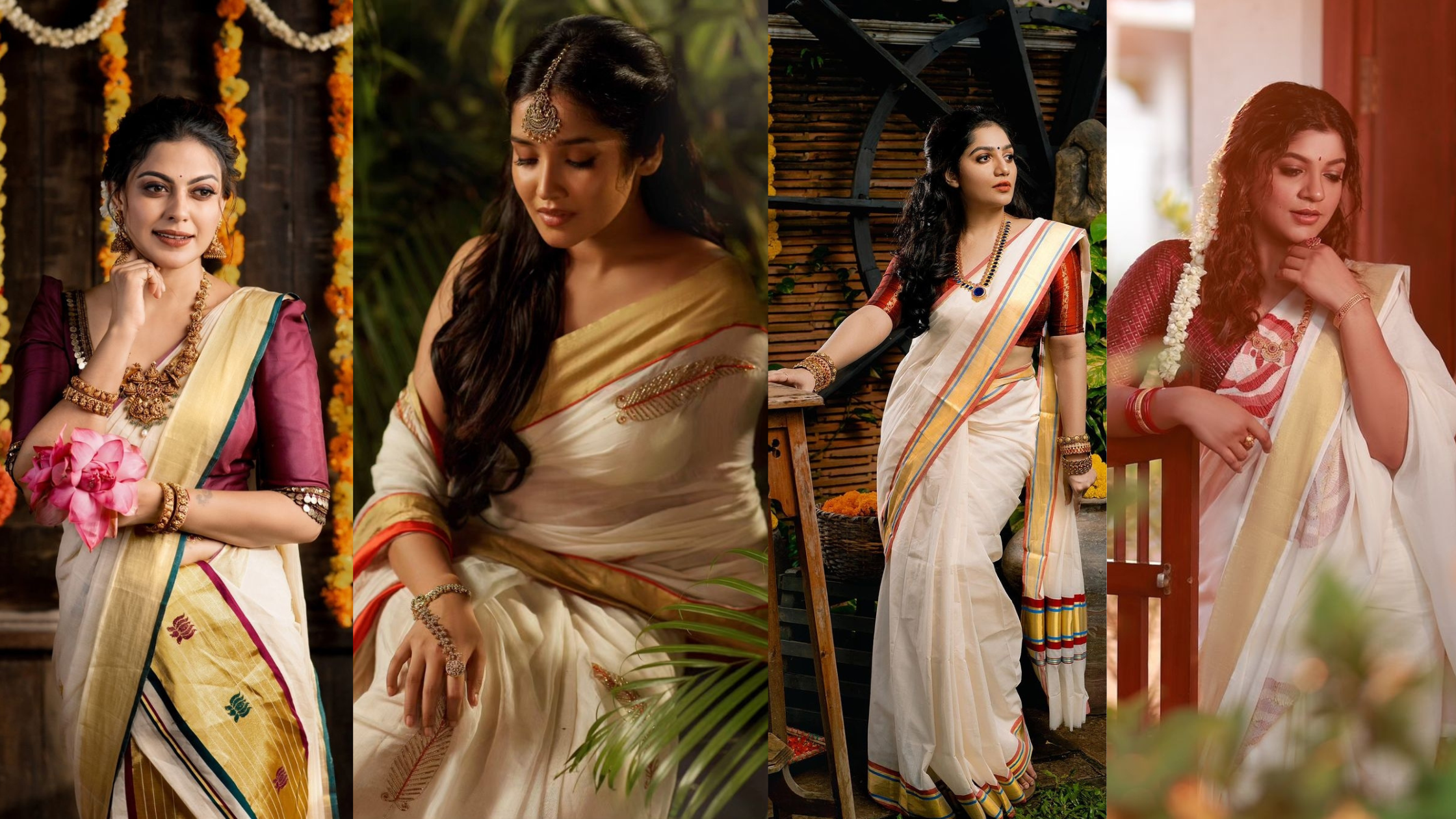
Onam, the grand harvest festival of Kerala, is a celebration of tradition, culture, and elegance. Each year, Malayalam movie celebrities embrace the essence of the festival by donning a mix of timeless traditional outfits and contemporary styles that reflect their unique flair. From graceful sarees to classic set mundus, the stars bring out the best of Kerala’s sartorial heritage. In this lookbook, we decode the standout fashion moments from your favorite M-Town celebs, showcasing how they beautifully combine tradition with modern elegance to make a statement this Onam season.
Anushree
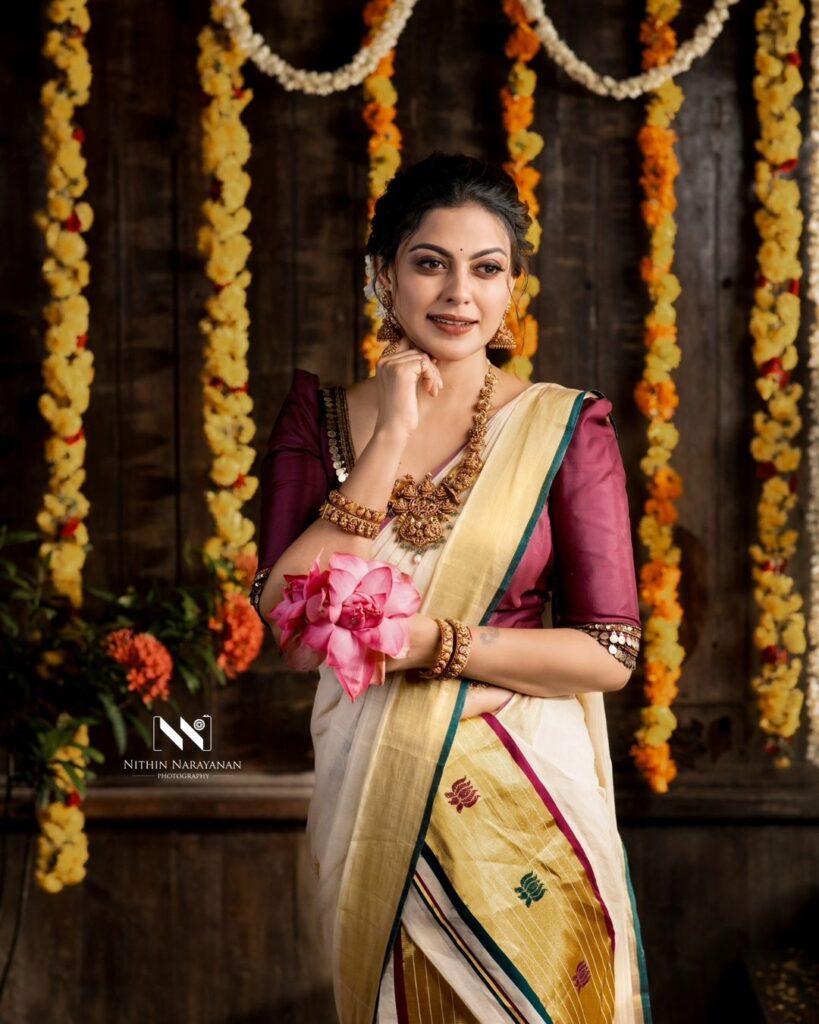
Anushree looked stunning in a double-colored set mundu from Naithu by Sruthi Prasanth, beautifully accessorized with exquisite jewels from Malabar Gold and Diamonds. Her look was perfectly complemented by flawless makeup by Sajith & Sujith.
Mahima Nambiar
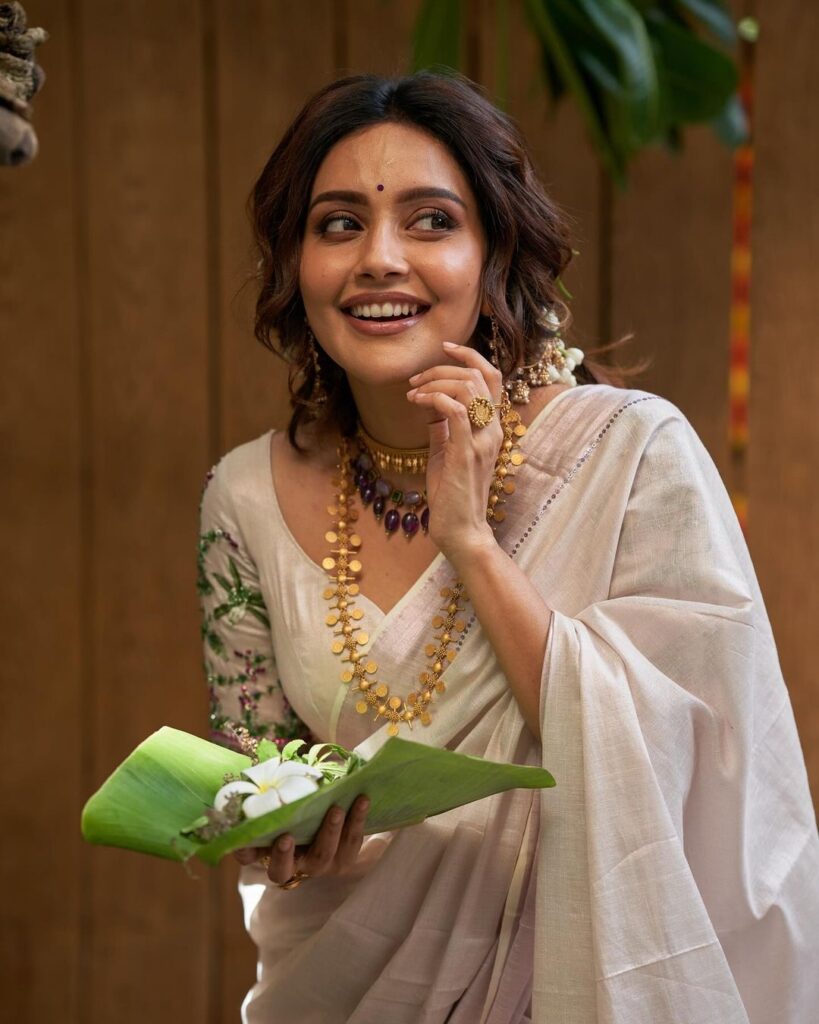
Mahima Nambiar looks stunning in T & M Signature’s Onam collection, “Thumbayum Thulasiyum.” Her festive look is perfectly complemented by exquisite jewelry from MOD Signature. Styled by Jobina Vincent, the ensemble is further enhanced with flawless makeup and hair by Pinky Visal, creating a captivating Onam look.
Ahaana Krishna
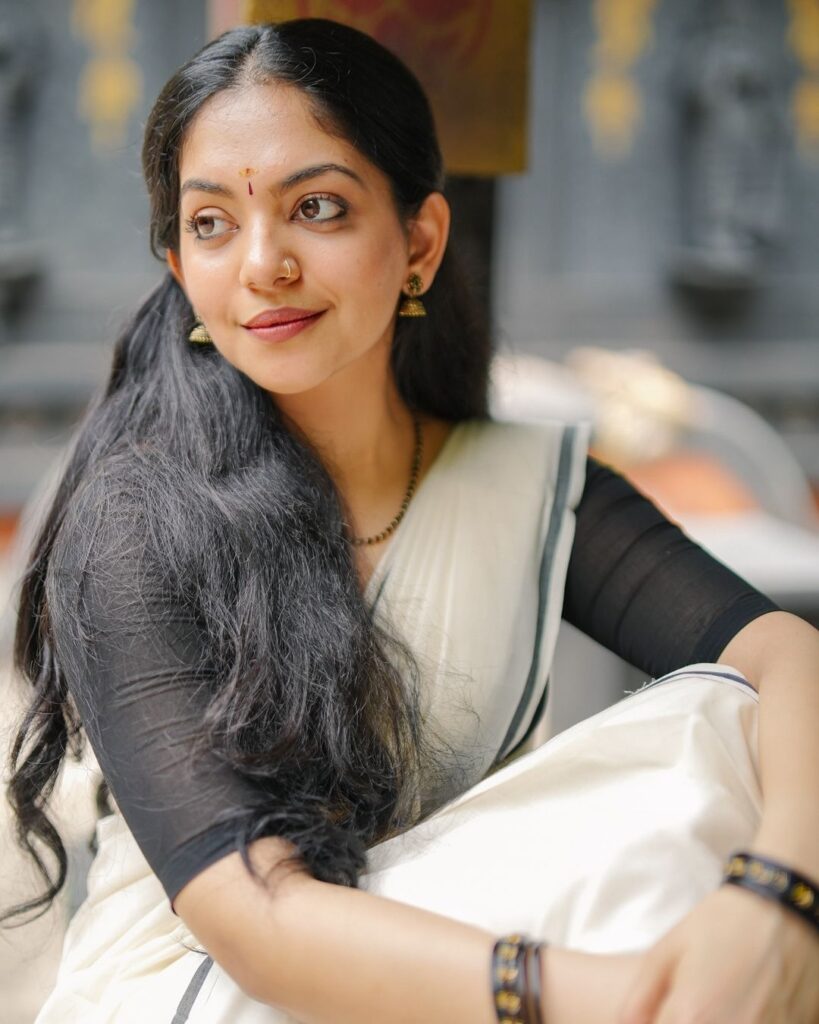
Ahaana Krishna exudes her signature charm with a simple yet effortlessly stylish look for this Onam in Black Set Mundu. Staying true to her unique “Ahaana style,” her minimalistic makeup and elegant hair were beautifully crafted by Amala Brahmanandan, perfectly complementing her festive vibe.
The Sukumaran Family

The Sukumaran family radiates elegance in their traditional Onam attire. Indrajith and Prithviraj opted for timeless simplicity, donning classic white shirts paired with mundus, while Mallika Sukumaran exudes a proud motherly grace in a beautiful, classic Kerala saree, perfectly capturing the spirit of the festival.
Shilpa Bala
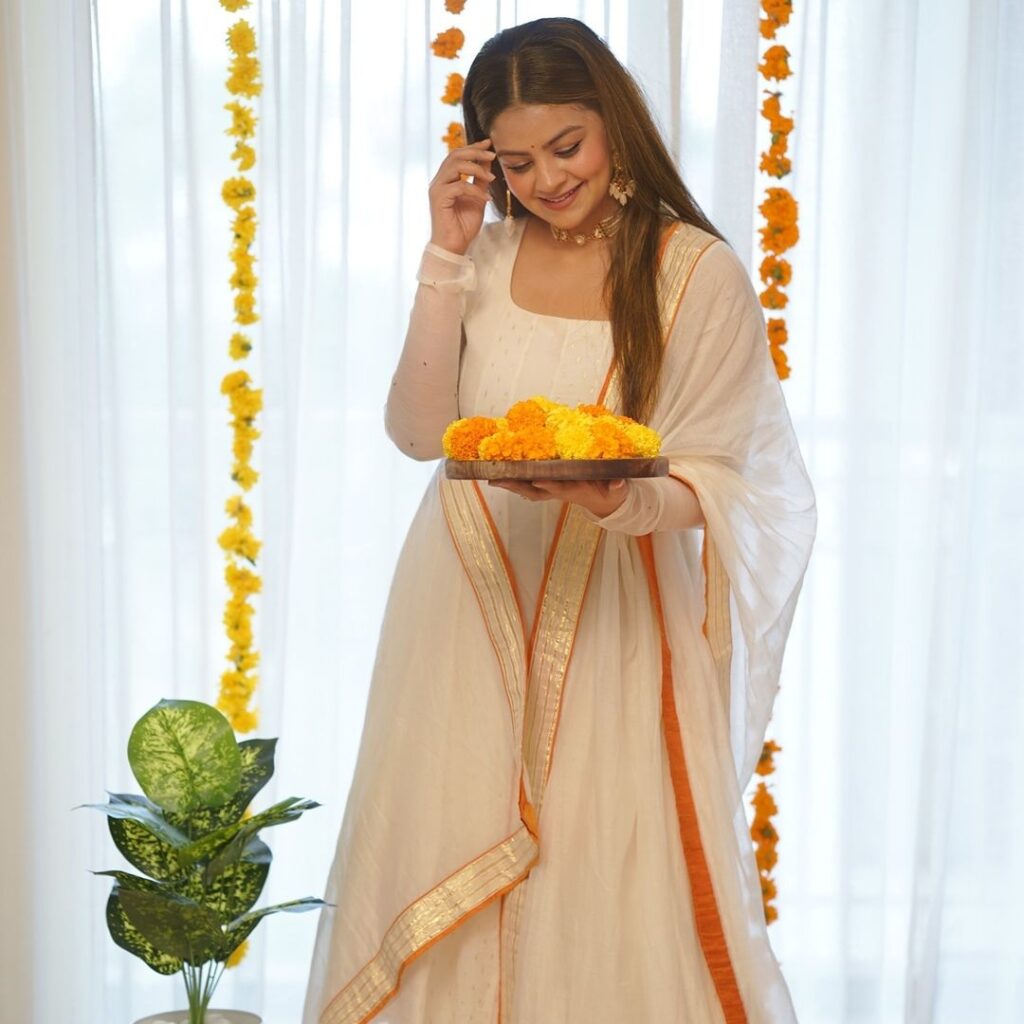
Shilpa Bala looks stunning and stylish in a white and orange traditional salwar by Kalaakari, exuding festive charm. The look, styled by Rashmi Muraleedharan, is perfectly complemented by elegant jewelry from Pure Allure. Her radiant makeup and hair, done by Sanaah, complete this beautiful Onam ensemble.
Anikha Surenderan
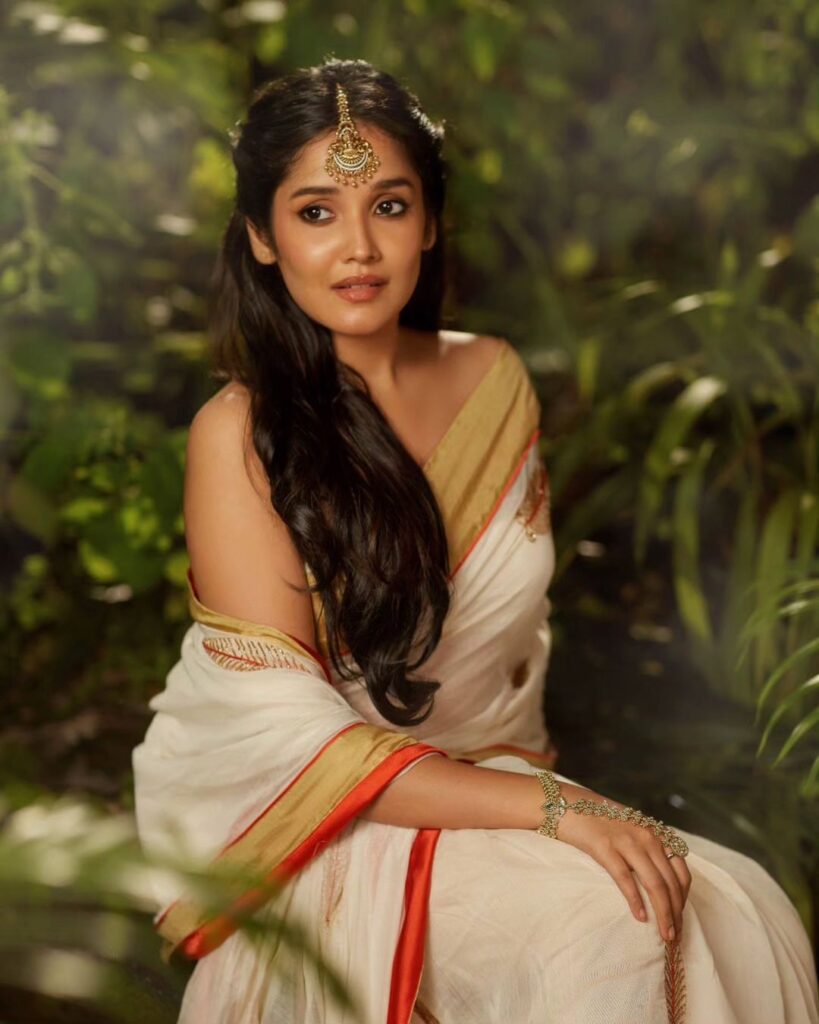
Draped in the stunning ‘Nila’ saree by Anusha Reji, Anikha Surendran mesmerizes with her grace and style. Styled to perfection by Mehaka Kalarikkal, her look is elevated by exquisite jewelry from Goldencup Bridal Rental Jewellery. With flawless makeup and hair by Ashif Marakkar. Anikha’s Onam look is truly captivating.
Nikhila Vimal
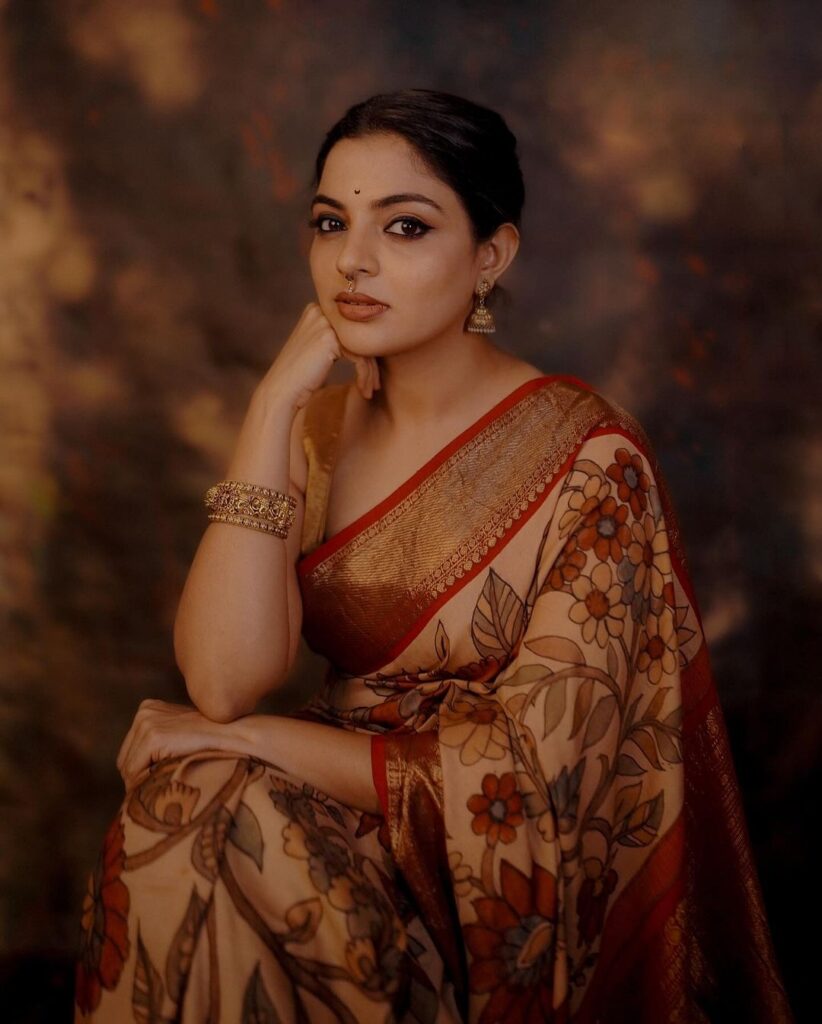
Like a muse straight from Raja Ravi Varma’s timeless canvas, Nikhila Vimal exudes ethereal charm in a stunning Pen Kalamkari Kanchipuram saree by The Saffron House. Styled by Smiji, her look is further elevated by flawless makeup and hair by Femy Antony
Dulquer Salman
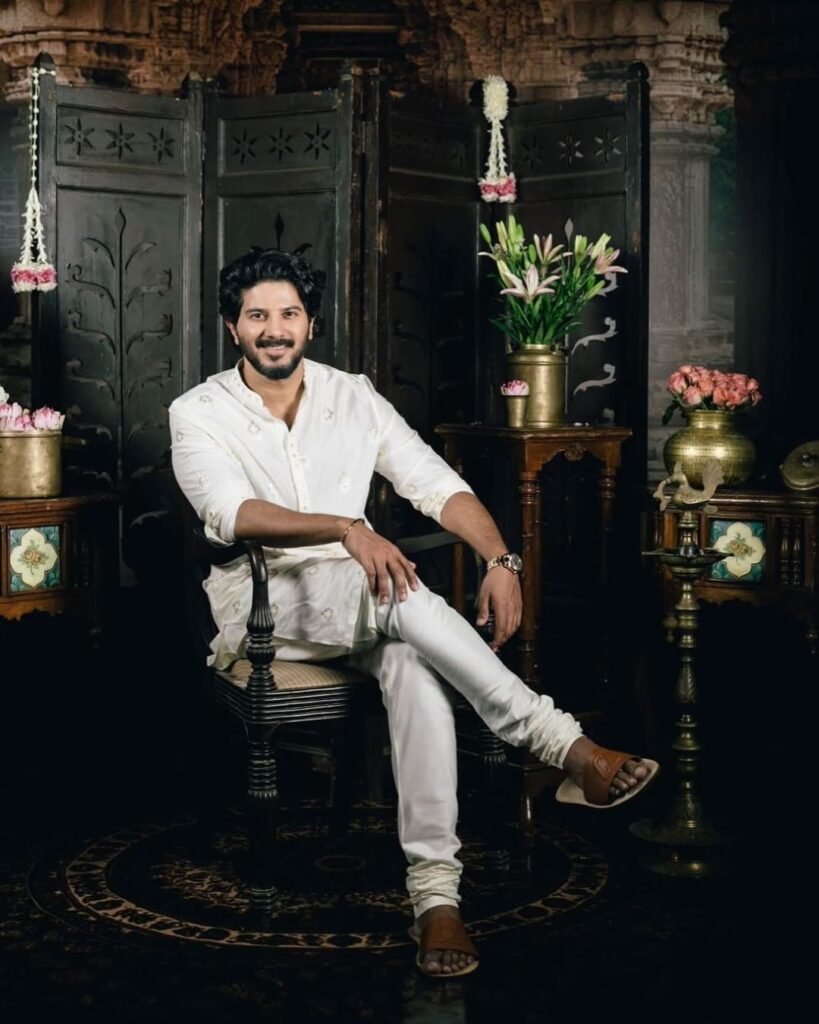
Dulquer Salmaan looks ravishing in a classic white kurta set, effortlessly blending tradition with chic style. His Onam look radiates simplicity and elegance, making a timeless fashion statement for the festive season.
Pearly Maany
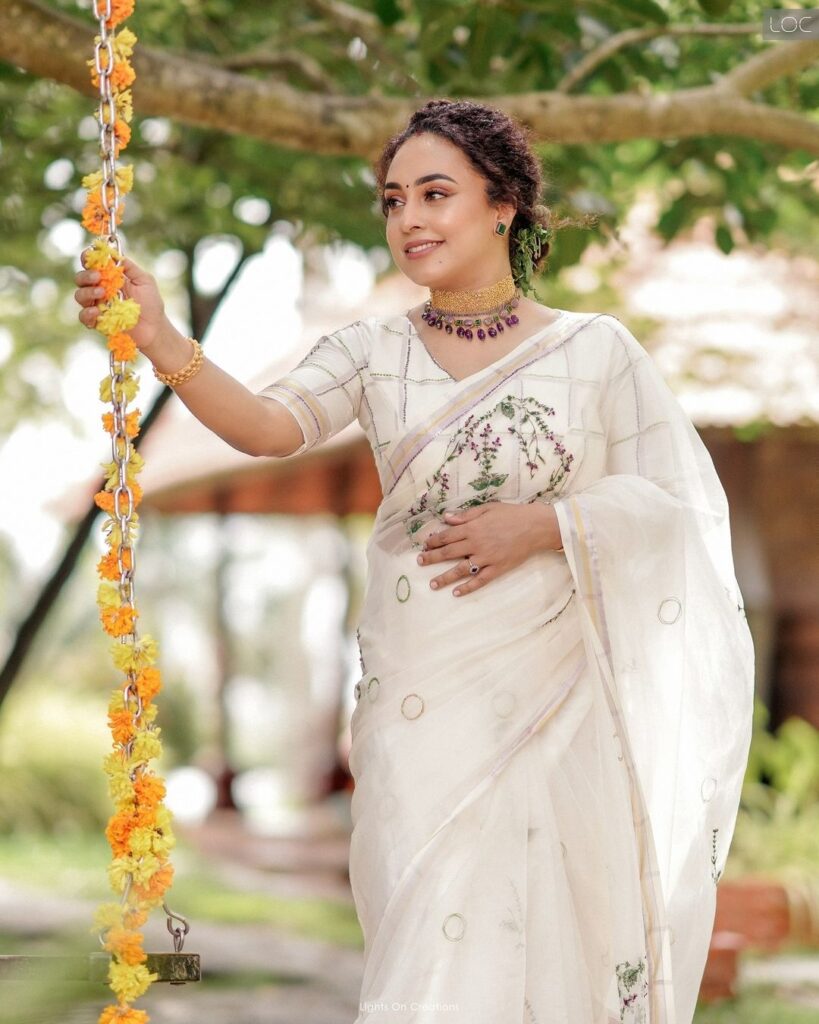
Pearly Maany looks stunning in a saree from T & M Signature’s Onam collection, “Thumbayum Thulasiyum.” Her elegant look is perfectly complemented by exquisite jewelry from MOD Signature Jewellery, with flawless makeup and hair by Touch by SiRe. The saree draping, beautifully done by Krishnapriya P V, completes Pearly’s enchanting festive ensemble.
Arya Babu
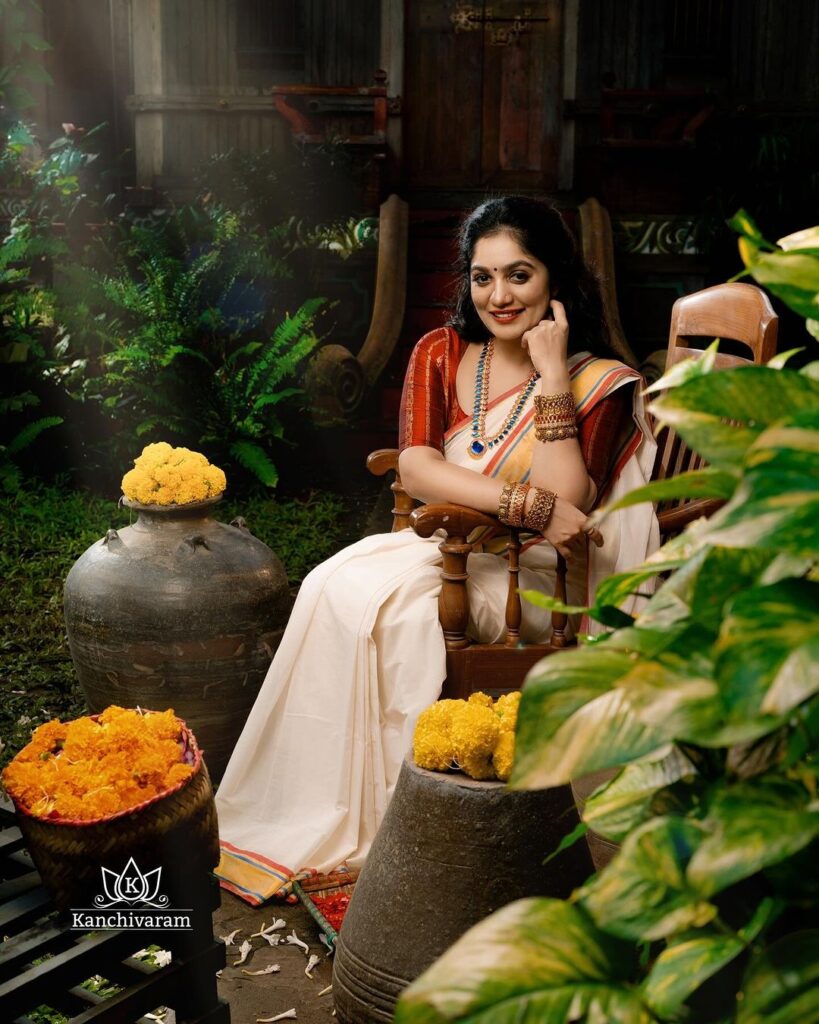
Arya graces this Onam in a pure Kerala handloom set saree by Kanchivaram.in, embodying the true essence of tradition and festivity. Styled by Sabari Nath, her look is beautifully complemented by elegant jewelry from Gemforher, with flawless makeup and hair crafted by Manju Michael’s Salon. Arya’s ensemble is a perfect reflection of timeless Onam elegance.
Navya Nair
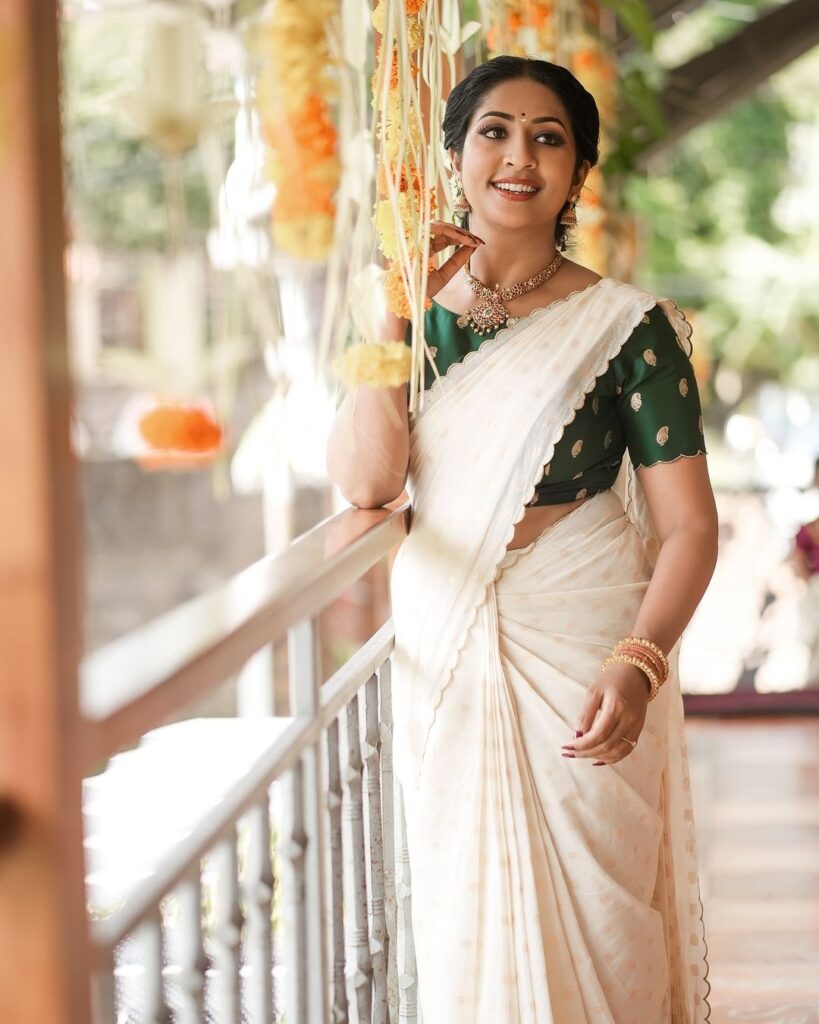
Navya stuns in her Onam look, wearing a beautiful outfit by Jugalbandhi. Her flawless makeup and hair, crafted by Sijan Joseph, enhance the festive charm. Adorned with exquisite jewelry from R. Giri Pai Jewellery, the look is captured to perfection by Black Lenzio, making Navya a vision of elegance this Onam.
Priya Prakash Varrier
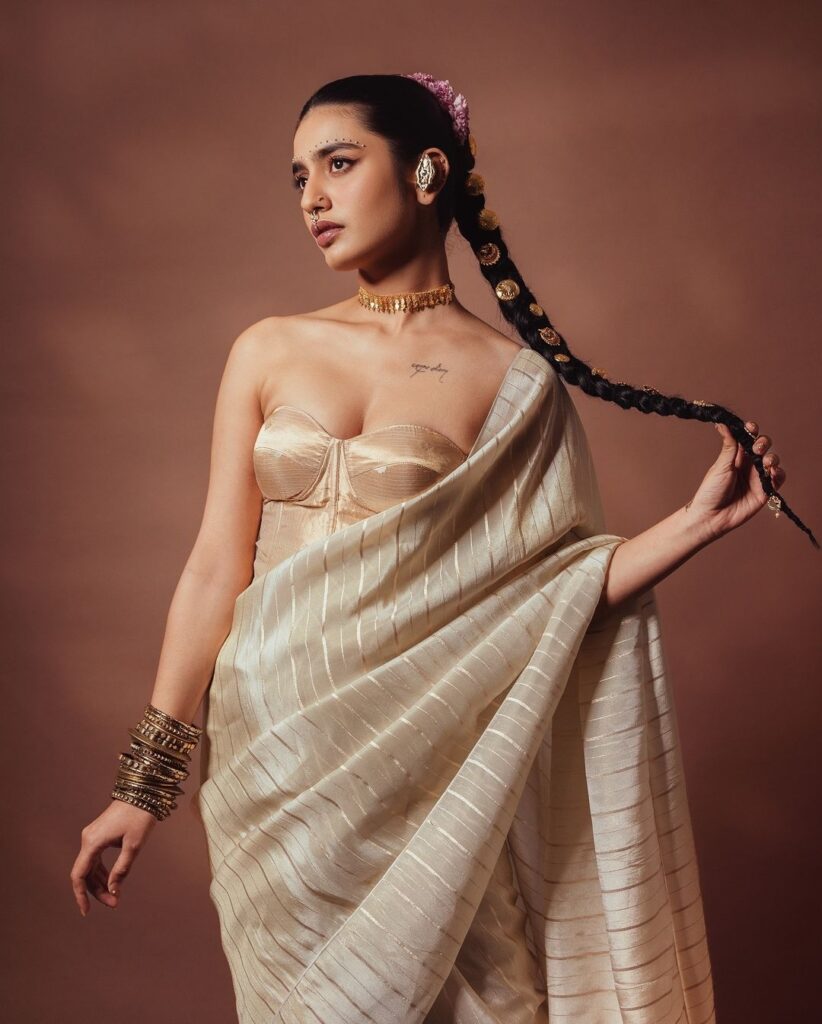
Priya Prakash Varrier looks gorgeous and modern in a stunning saree by Mloft. Styled by Asaniya Nazrin, her look is flawlessly complemented by makeup and hair crafted by Unni, making her stand out with a perfect blend of traditional elegance and contemporary chic.
Aparna Balamurali
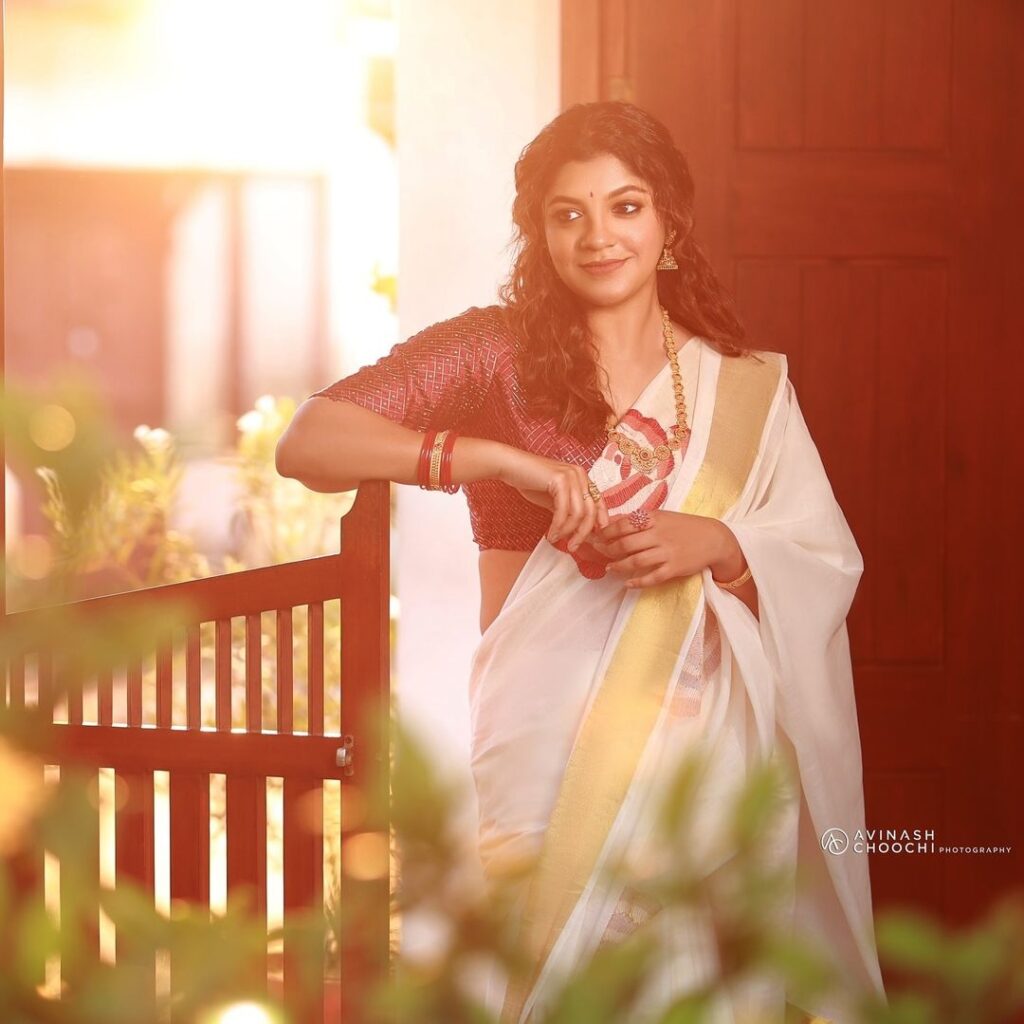
Aparna Balamurali looks traditionally beautiful in a Kerala saree by R O U K A by Sreejith Jeevan. Styled by Rashmi Muraleedharan, her look is complemented with flawless makeup and hair by Sruthi Sai. The ensemble is completed with exquisite jewelry from Nakshathra Gold and Diamonds, making Aparna’s Onam look timeless and elegant.
Amala Paul & Family
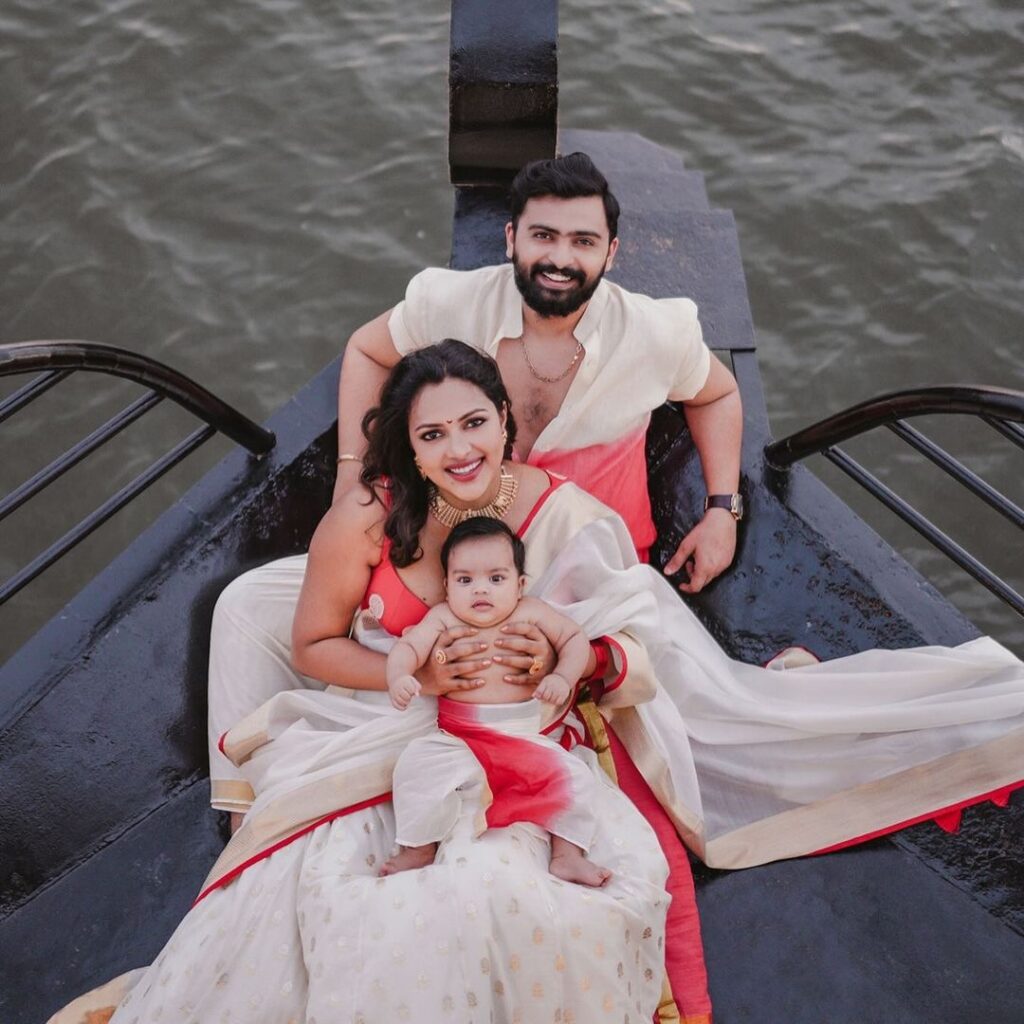
Amala Paul’s family Onam picture is an absolute dream, with the family dressed in stunning red and white outfits. Amala shines in an elegant ensemble by Made by Milan, while Jagat looks dapper in his outfit from House of Messcal. Styled by Sapna Fathima Kajha, the look is further enhanced by flawless makeup and hair by Sajith & Sujith, and exquisite jewelry from Cressida Signature Jewels. Together, they capture the perfect festive spirit in this beautiful Onam portrait.
Rajisha Vijayan
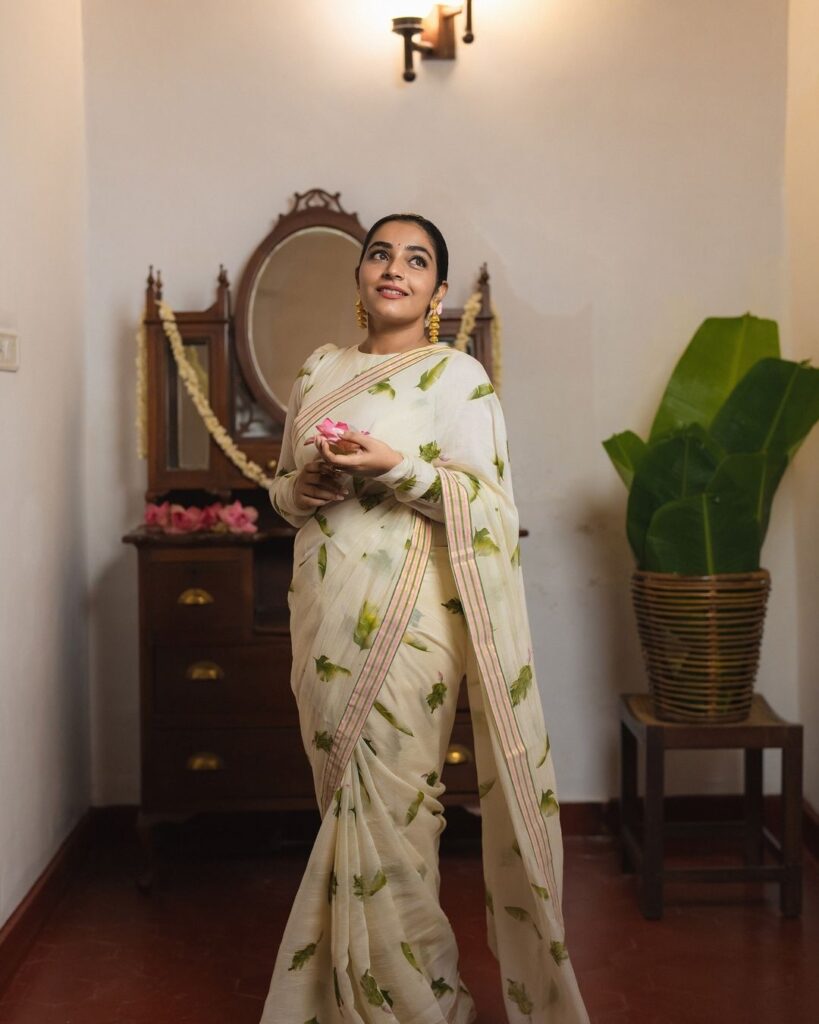
Rajisha looks stunning in a leaf-printed saree by ALDA Designer, effortlessly blending tradition with a modern twist. Styled by Amritha Lakshmi, her look is perfectly complemented by makeup and hair by Laxmi Venugopal. The ensemble is enhanced with elegant jewelry from TT Devassy Jewellery, and the draping, beautifully done by Exotic Makeover’s Elizabeth Shinitha, completes this mesmerizing Onam look.
Miya
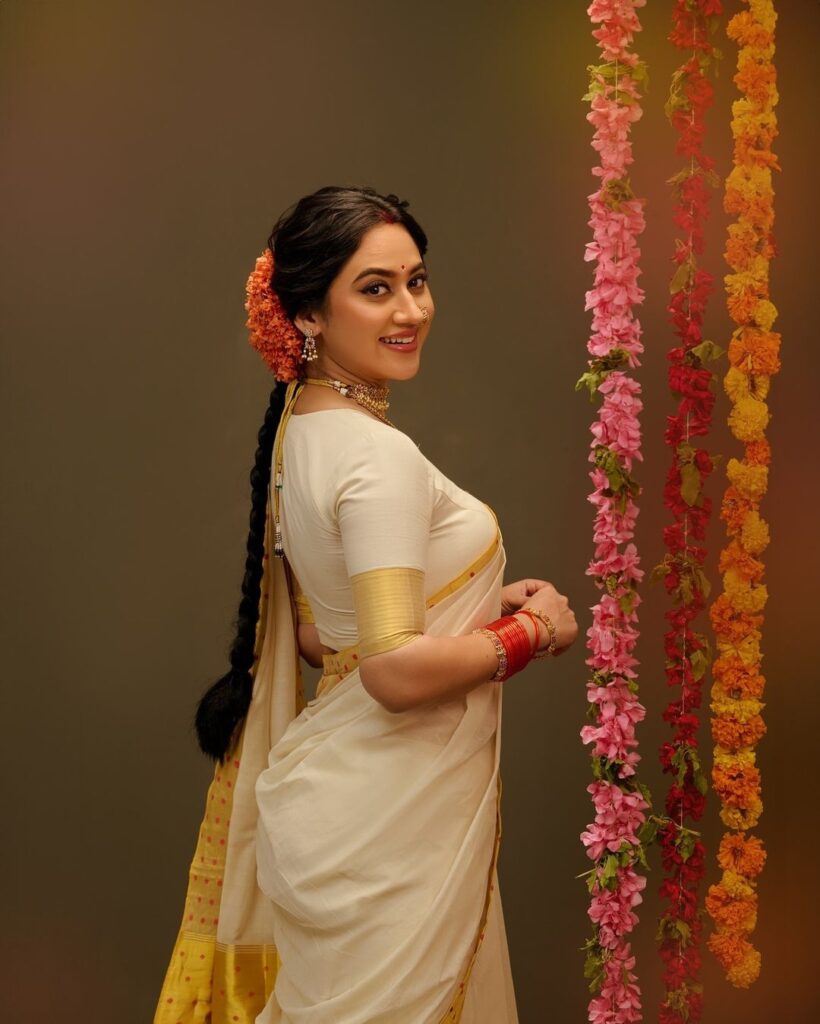
Miya embraces the spirit of Onam in a pure Kerala handloom Kasavu saree by Kanchivaram.in, radiating traditional elegance. Styled by Sabari Nath, her look is beautifully complemented by makeup and hair by Sijan Joseph. The ensemble is further enhanced with exquisite jewelry from Mayoora Jewelry Designs, and the saree draping, skillfully done by Krishnapriya P V, completes this timeless Onam look.
Cover Story
Sarees of India : Punjab’s Phulkari
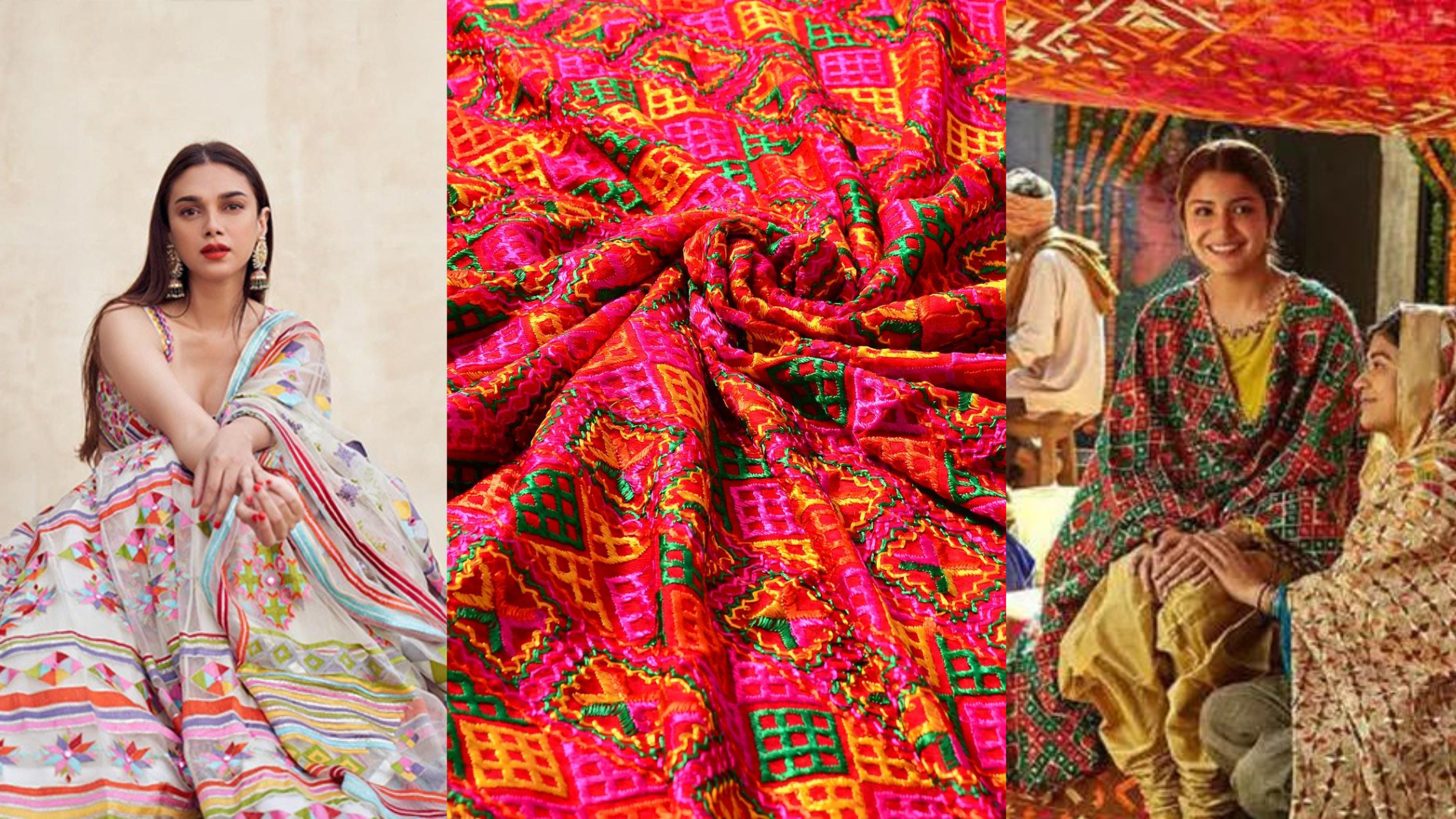
The traditional Punjabi art form ‘Phulkari,’ derived from the terms ‘phul’ and ‘kari,’ meaning flower and effort, is thought to have begun in Punjab in the 15th century by Punjabi women. Bright and bright textile art uses needlework and the most basic designs to create a fascinating, appealing, and ornamented result. Phulkari work is reported to be mentioned in Heer Ranjha’s Waris Shah love romance. References to this needlework tradition can also be found in the Vedic period. Women’s phulkari chadar, dupattas, sarees and other veil garments were traditionally exchanged as bridal gifts or heirlooms.
The inspiration for the Phulkari motifs would originate from their imaginations based on their surroundings, nature, animals, birds, gardens, or even a mother-daughter conversation. Marigolds, jasmine, peacock, and mustard flowers were frequently used as a means of expressing their feelings, inventiveness, and expressiveness.
Because Phulkari is made out of symmetrical designs, the craftsmen and women must count the amount of stitches on each side before proceeding, making Phulkari a time-consuming method. However, as time passed, people moved on to new techniques, and in addition to coarse khaddar fabrics, silk, georgette, chiffon, and normal cotton began to be used. Darning stitch- the most significant stitch- was used to border the khaddar in the past. Other stitches like herringbone, buttonhole, and running stitch were also utilized. These stitches were employed to make a unique motif or as a border.
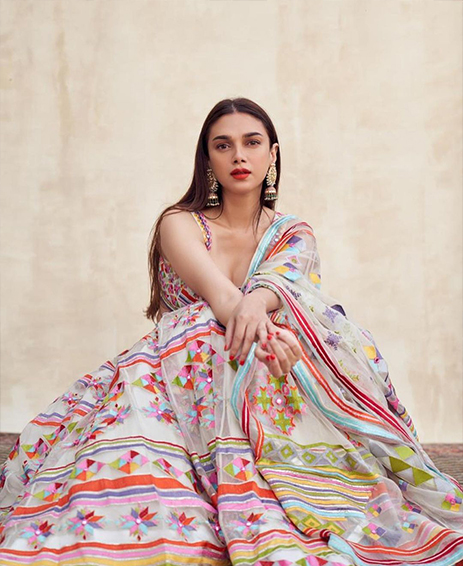
The use of colors is extremely important in Phulkari art. Traditionally, just four hues were utilized, each with its unique meaning. For example, white is appropriate for elderly women and widows, red is appropriate for young girls and brides-to-be, and blue, black, and dark tones are appropriate for everyday use. Red was the most commonly used color to express enthusiasm, followed by orange for vitality and green for fertility.
In India, there is not just one sort of Phulkari, but numerous. What distinguishes one Phulkari from another is the darn stitching process, which is done on the reverse or wrong side of the fabric, which makes this handcraft unique. Here are some of the most popular Phulkari designs.
Bagh– A design in which horizontal, vertical, or diagonal stitching cover the entire fabric surface.
Chhamas – Chhamas fabric has mirrors stitched or woven onto it with yellow, grey, or blue threads.
Neelak– Neelak patterns have a black or red backdrop with bright yellow or red embroidery on top. For a distinct shining texture, the design is combined with metal or copper threads.
Chope– Chope is traditionally done in yellow and red threads and involves embroidering on both sides of the fabric. This embroidery is made out of a series of triangles or a step-ladder pattern.
There used to be 52 different types of Phulkaris, but that number has since been reduced to only a few. The states that use the Phulkari traditional art and needlework the most are Punjab, Haryana, and Rajasthan.

